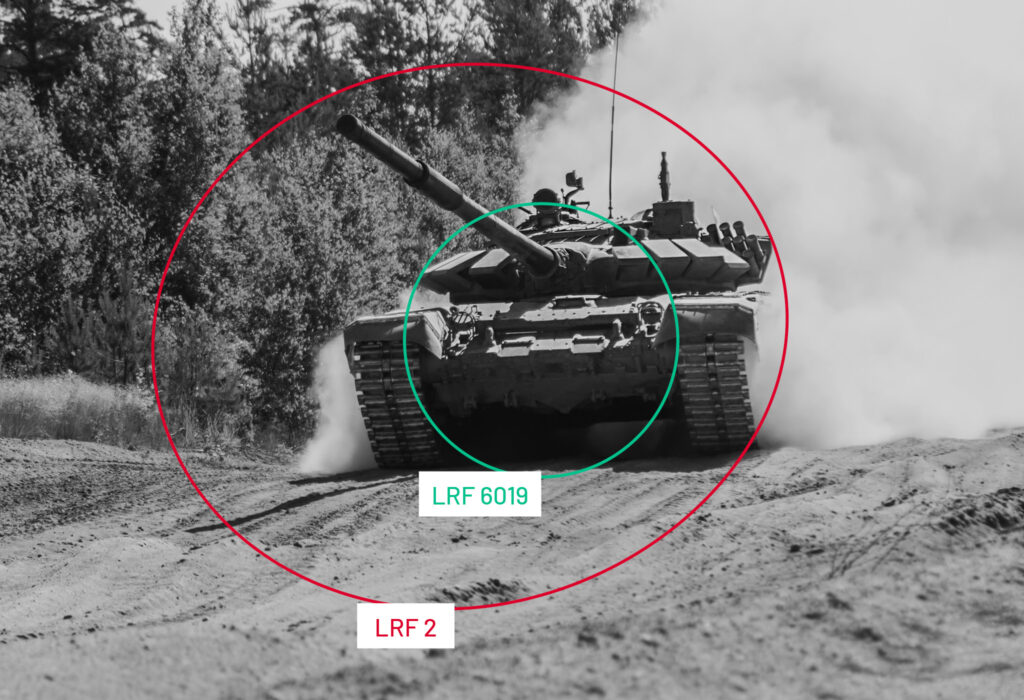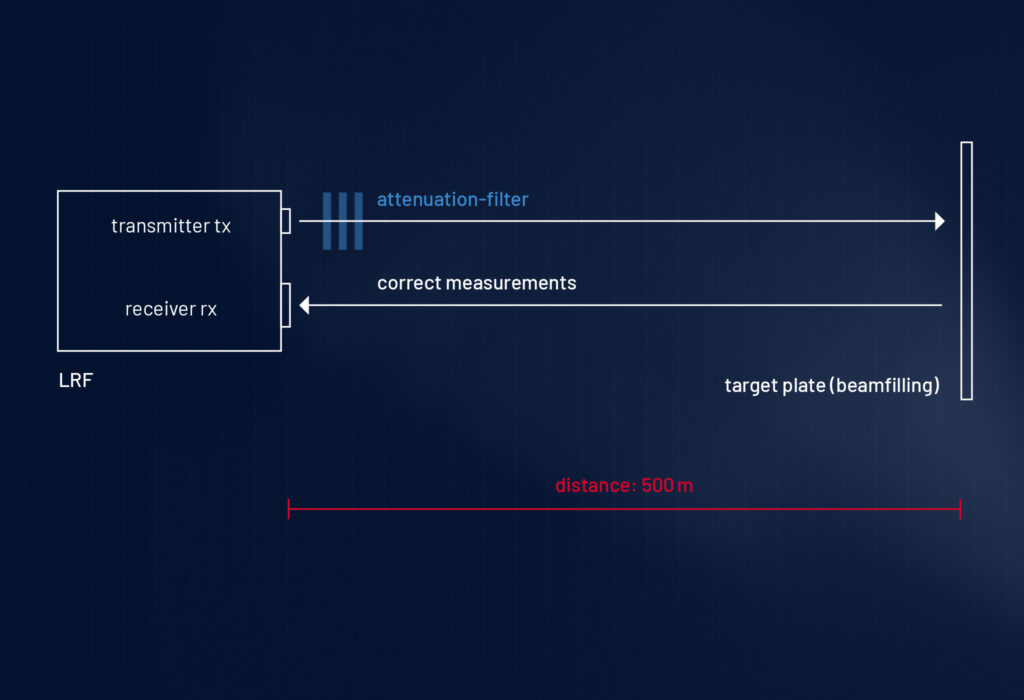Extinction Ratio (ER) is often considered as the main performance indicator of a Laser Rangefinder (LRF). Well, it is one parameter, but certainly not the only one, that significantly influences the range performance. A high extinction ratio does not automatically guarantee a high measuring performance out in the field on real targets. The following report below will give you some answers to this question.
What is Extinction Ratio?
The Extinction Ratio is defined as the amount of attenuation, that can be introduced in the optical path until the LRF system is not able to measure anymore. The Extinction Ratio is a dimensionless number and typically expressed in dB.
How is the Extinction Ratio measured?
It may be surprising that despite the importance of LRFs for modern armed forces there is no standard that regulates the measuring methods for Extinction Ratio. Therefore, even a mere comparison of figures from different manufacturers can be deceptive, as it may not show the true picture without knowledge of the test method behind. In the following, the method used by Safran Vectronix will be explained.
To determine the Extinction Ratio, we perform measurements upon target plates (Lambertian surface) with a size larger than the laser spot at relatively short distances of 500 m. We stack attenuation filters one by one in front of the laser output until a final correct measurement can be made. The attenuation determined in this way is then equal to the ER of the LRF.
The extinction value can now be used in combination with very important other parameters, described below, to simulate other measuring distances and also a maximum measuring distance. Especially, if the target is non-cooperative, e.g., small and irregularly shaped, the influence of other measurement parameters is highly important for any estimations.
Extinction Ratio Test is useful for production quality control
ER is a very useful tool for internal quality control, as it allows very quick comparisons of different modules of different batches. Such a test is easy and inexpensive to perform, since you only have to measure over short distances and not over several kilometers. Moreover, the influence of atmospheric conditions is negligible on such short distances and this makes you more independent from prevailing weather conditions and is so more easy to compare.
Such a test is very useful for quick comparisons of the module performance, but it is not sufficient to describe ranges for real application cases without knowing other important beam parameters that must be additionally considered in real life in the field when measuring a target at a distance of several kilometers.
Beam quality is crucial for range performance
Another important parameter for determining the performance of an LRF is the influence of divergence. Extinction Ratio is determined at short distances and “infinite”/beam-filling targets where divergence and laser beam size are not important. But in real applications, the targets are at a much greater distance and here the laser beam is often much larger than the real target: E.g. targeting a tank in a few kilometers with the result, that a portion of the laser energy is shot past the target and is lost for the distance measurement. And especially for “smaller”, which means tank size targets on several kilometers the divergence is one of the most important performance parameters. Moreover, any beam wandering coming from the laser source itself or from atmospheric turbulences increases the amount of “lost” laser light missing the targets, which additionally lowers the performance, which is again not considered in the Extinction Ratio.
Example: Extinction Ratio in a real application
LRF 6019 has an Extinction Ratio of 30.4dB and a divergence of 0.5 x 0.5mrad. This means, that the beam has a size of 25cm at a range of 500m and with an ER of 30.4 dB.
Another LRF 2 has an Extinction Ratio of 36dB and a divergence of 1.5 x 1.0mrad. This means, that the beam has a size of 75 x 50cm at 500m. At the short test distance of 500m it is no problem to hit a target plate with both beam sizes and the LRF 2 has a 5.6dB better performance. But what about when we switch to a real-world scenario?
A real target at a range of 5km (e.g. a tank) has a front surface of 2.6 x 2.8m. This means the beam of the LRF 6019 with 0.5 x 0.5mrad divergence has a diameter of 2.5m and fully hits the target. In comparison, LRF 2 with 1.5 x 1.0 mrad divergence has a beam size of 7.5m x 5m and a significant fraction of the beam misses the target, or even might lead to a detection of another target in the background. The different beamsizes on the target are illustrated in the picture below. This big loss of reflected laser beam reduces strongly the range performance of LRF 2. On a real target the two systems will have the same range performance, even if the second LRF has 5.6 db higher Extinction Ratio. This example shows the importance of considering other parameters for estimations on real targets in real applications.

